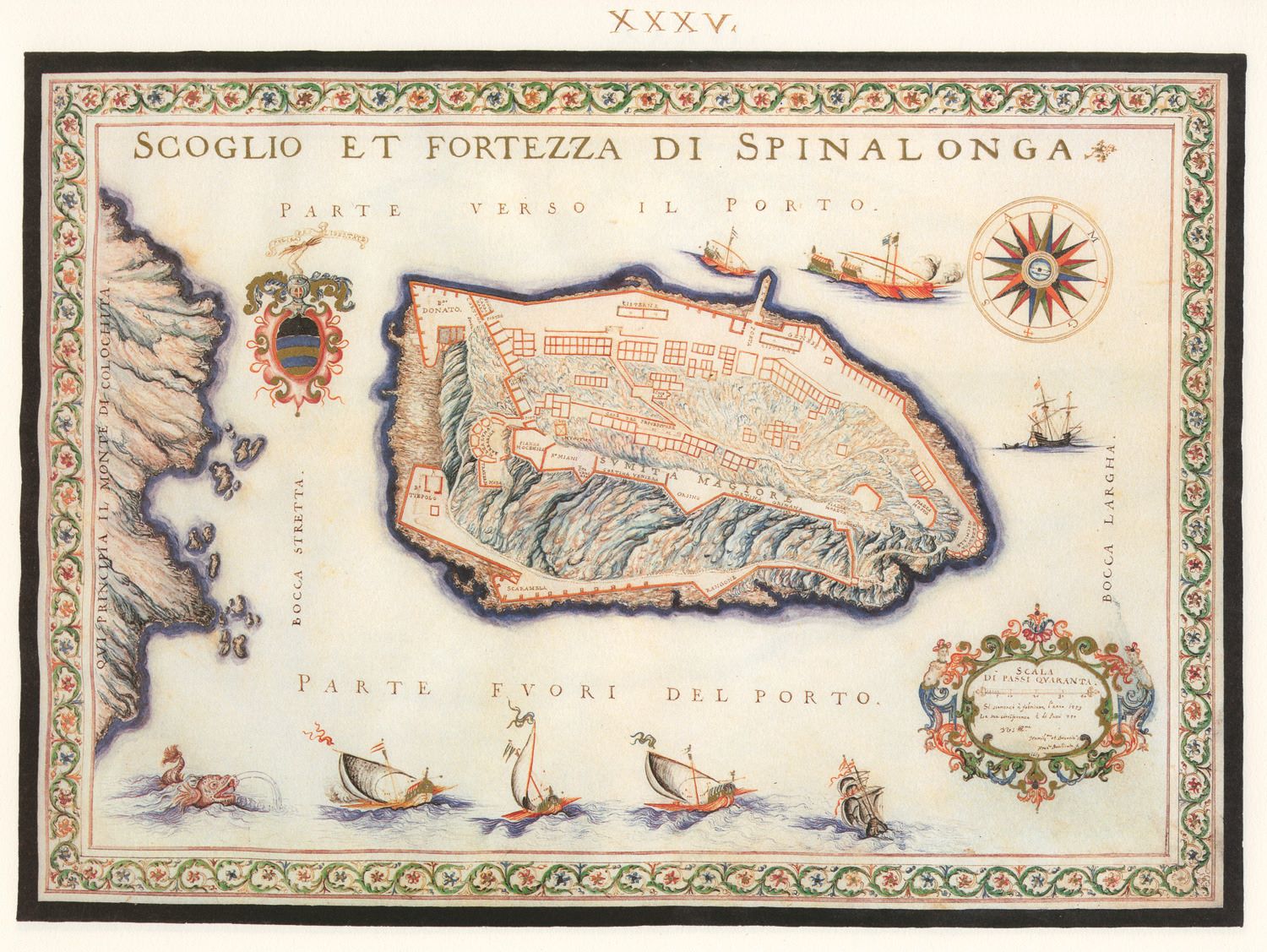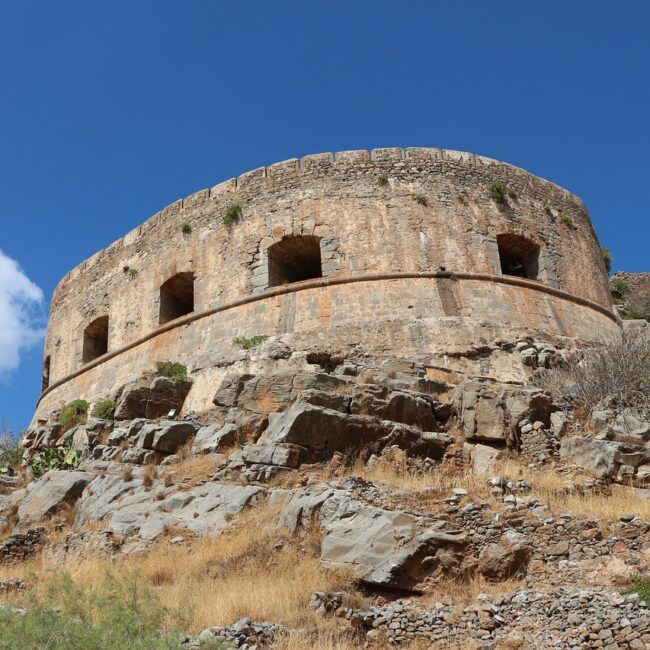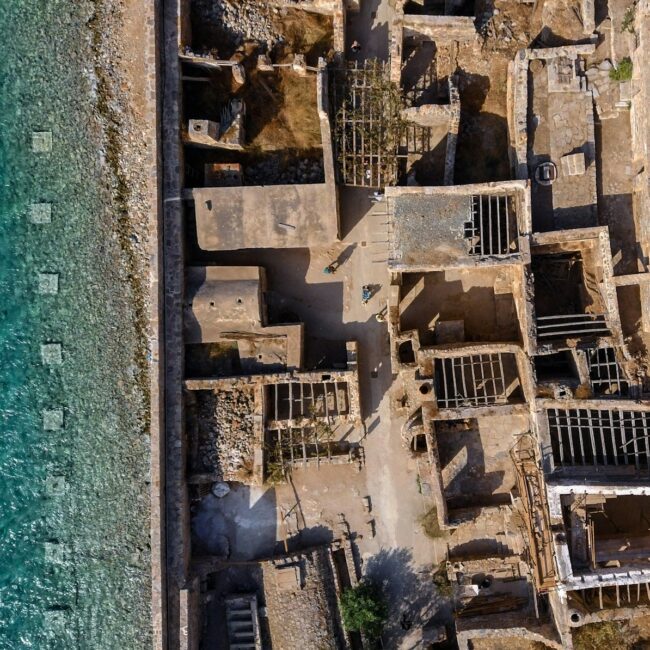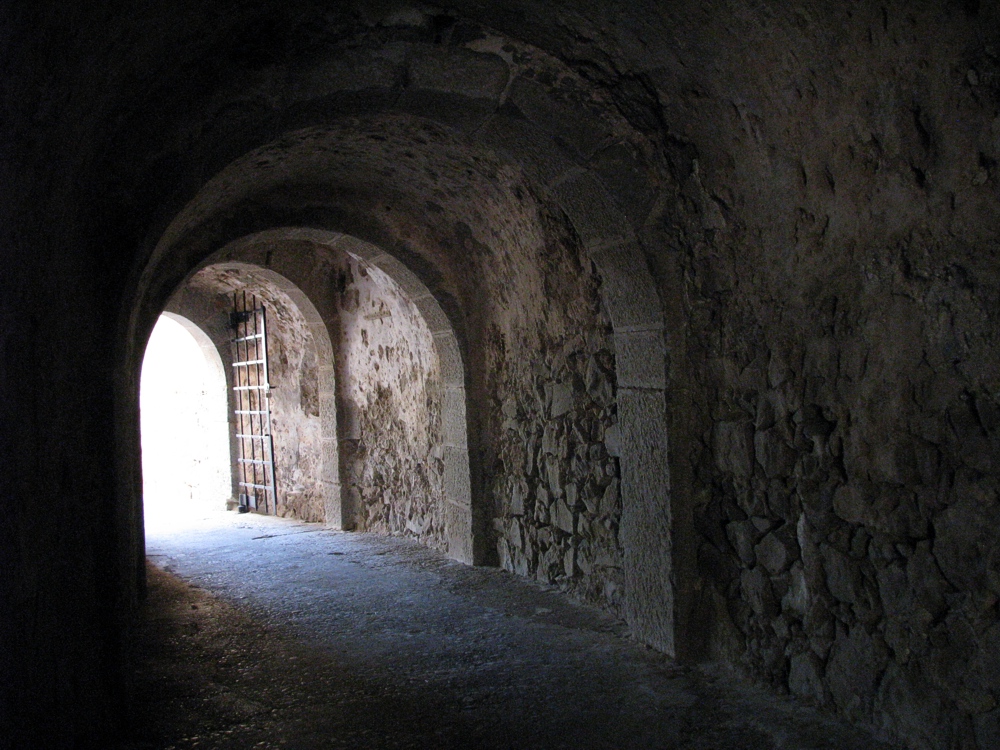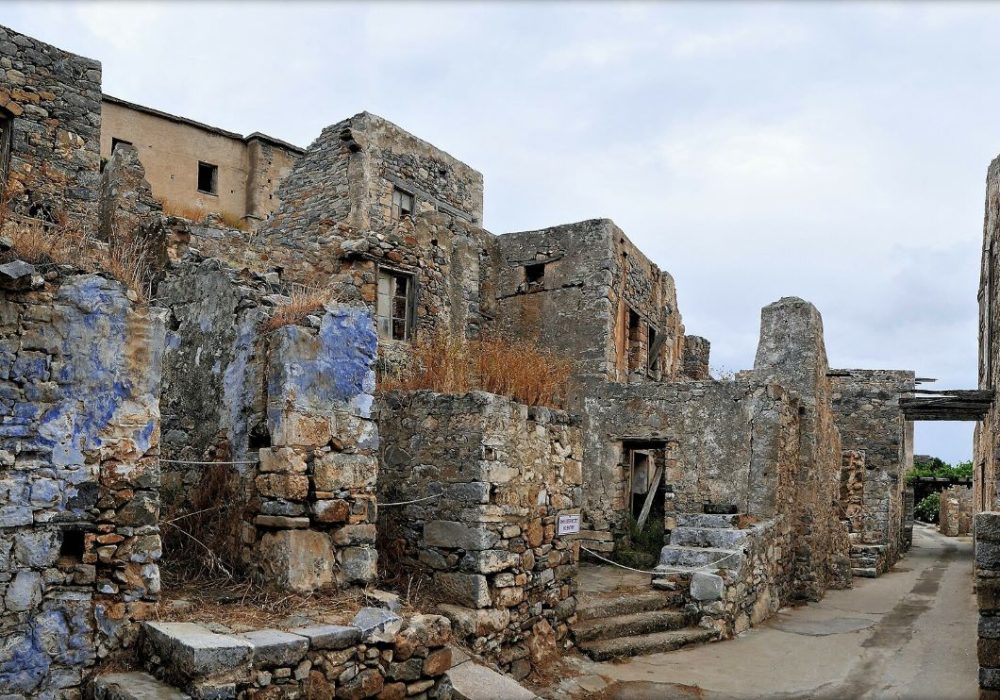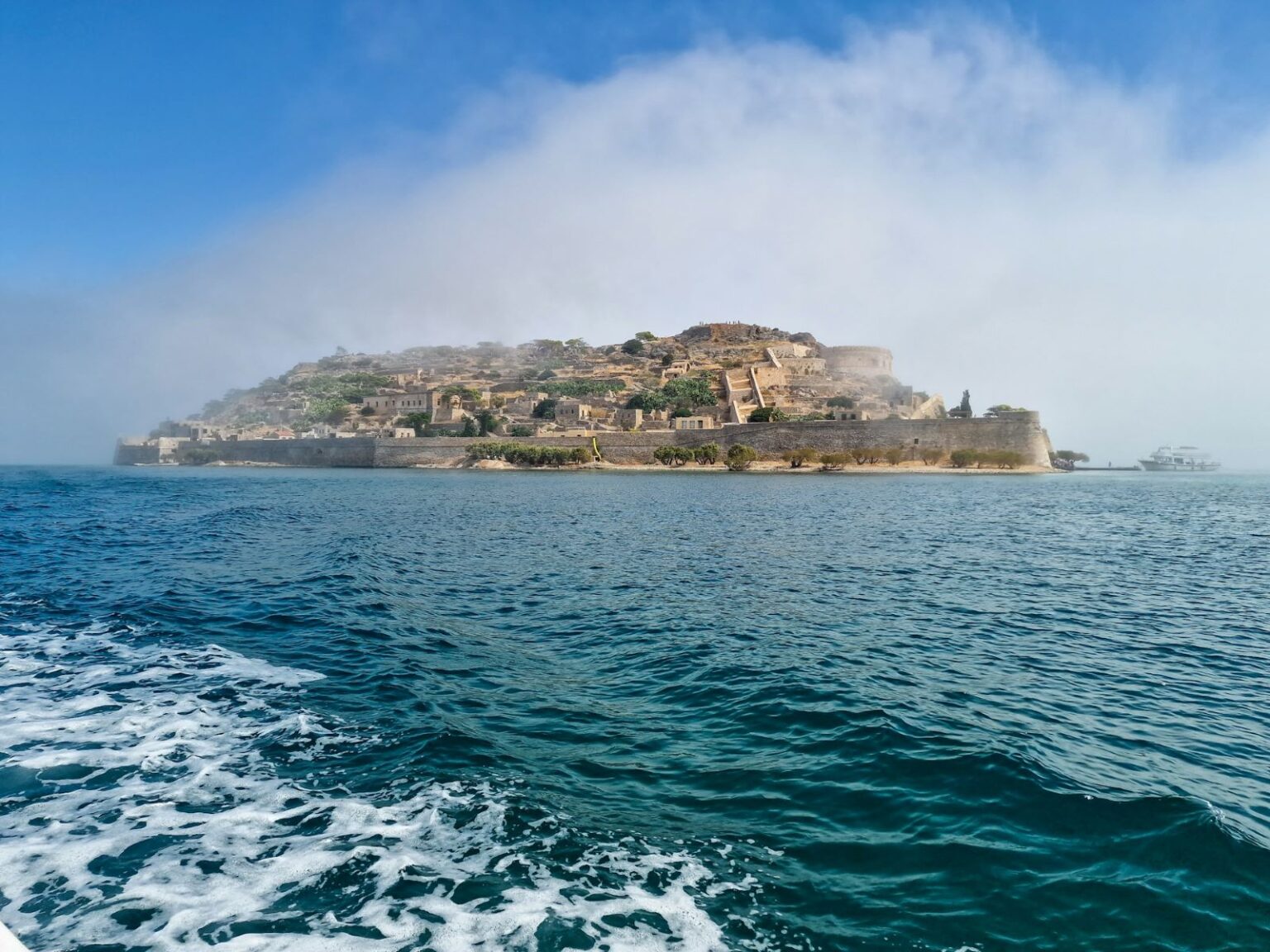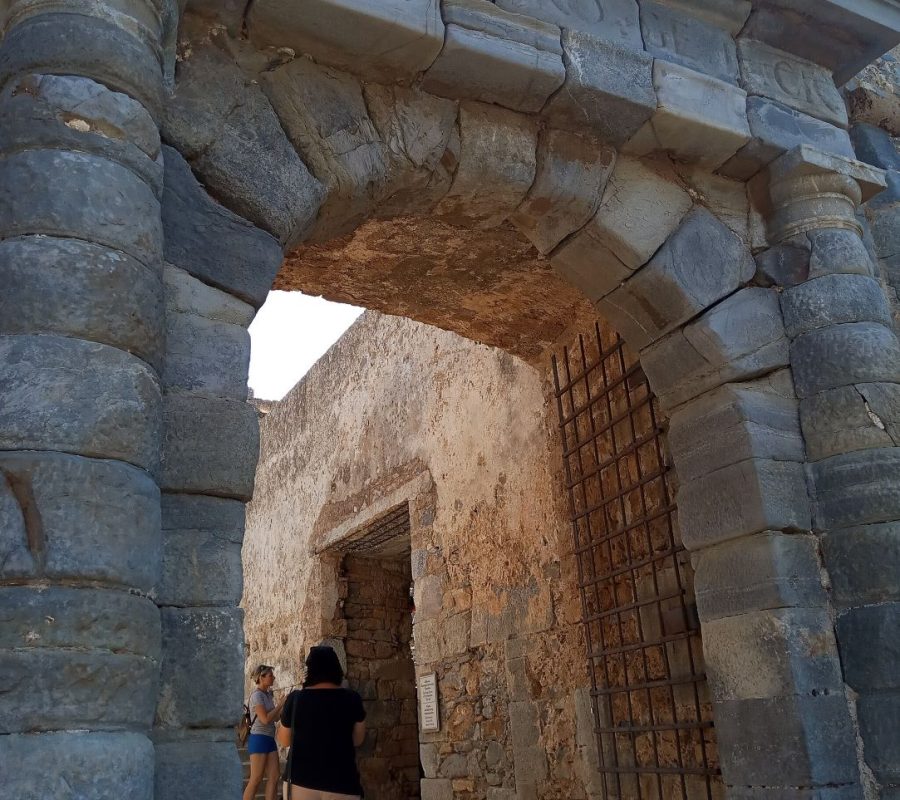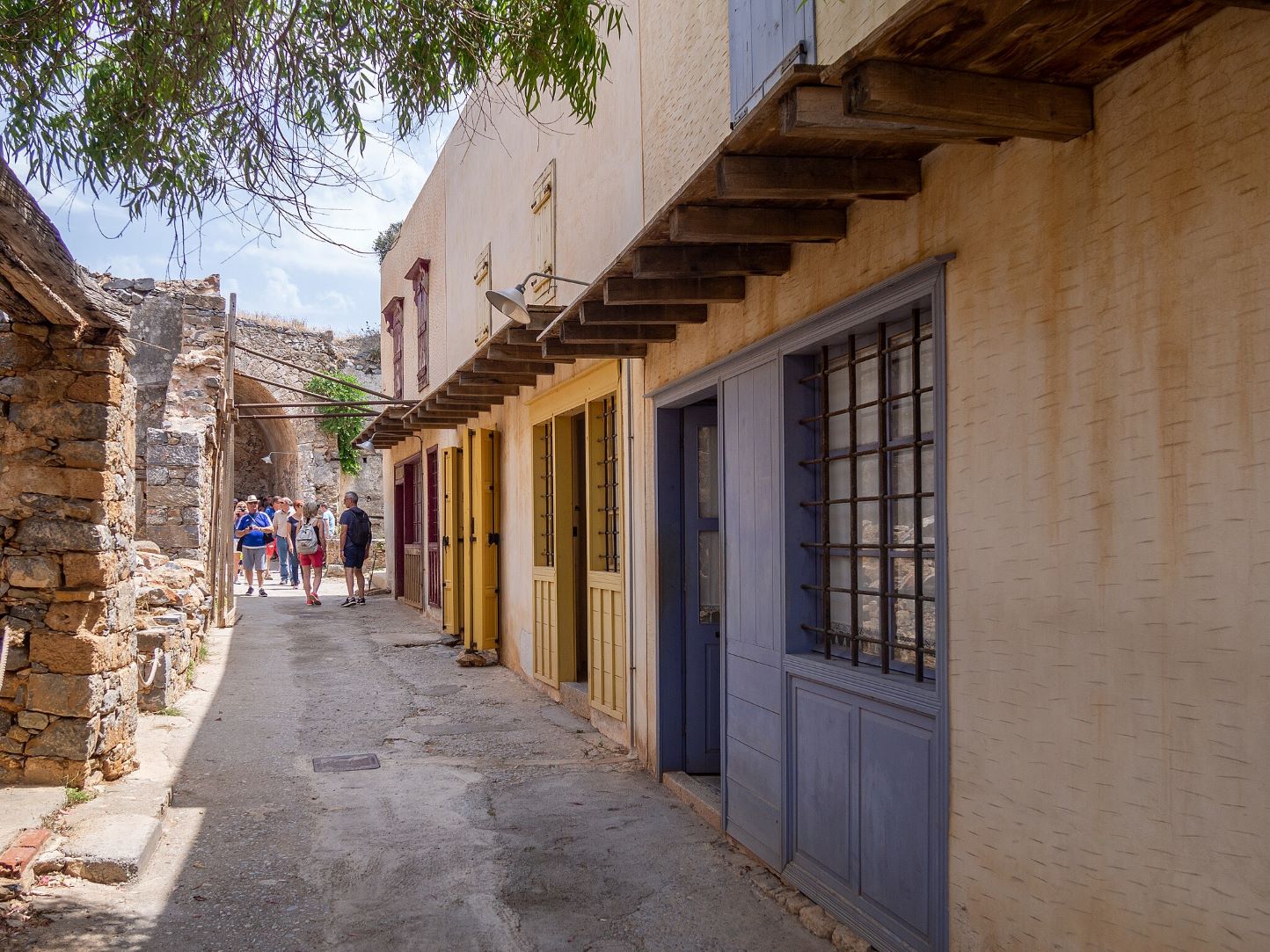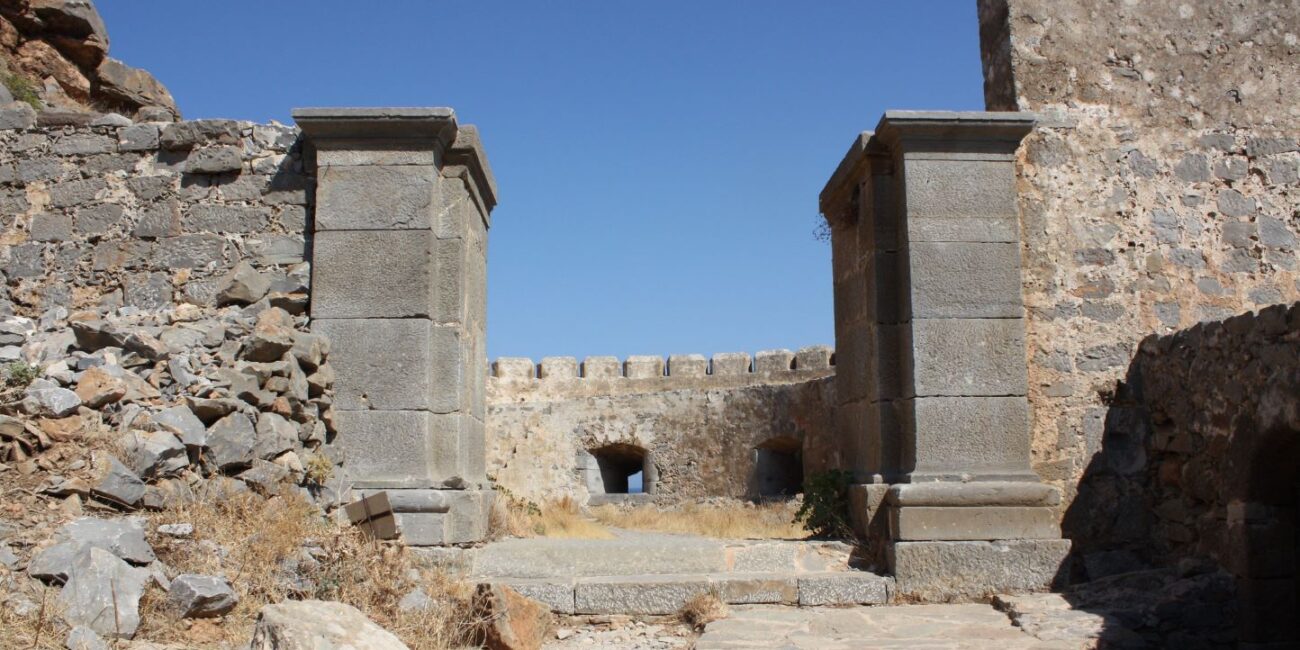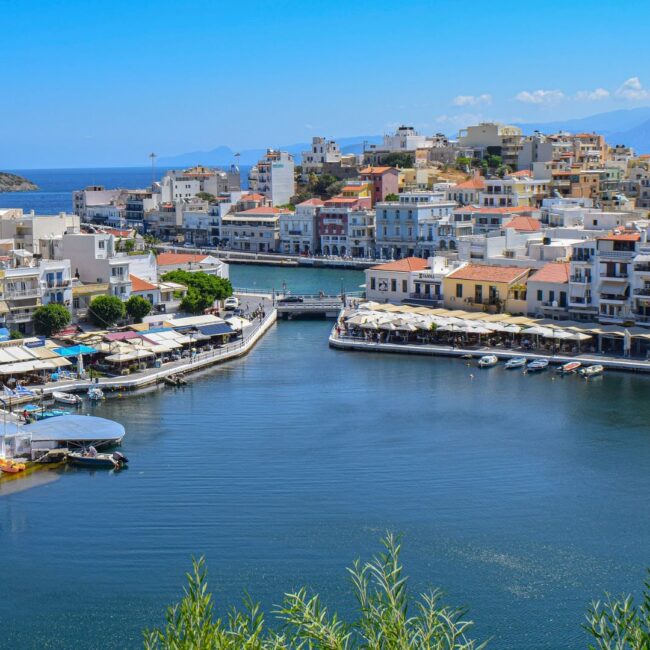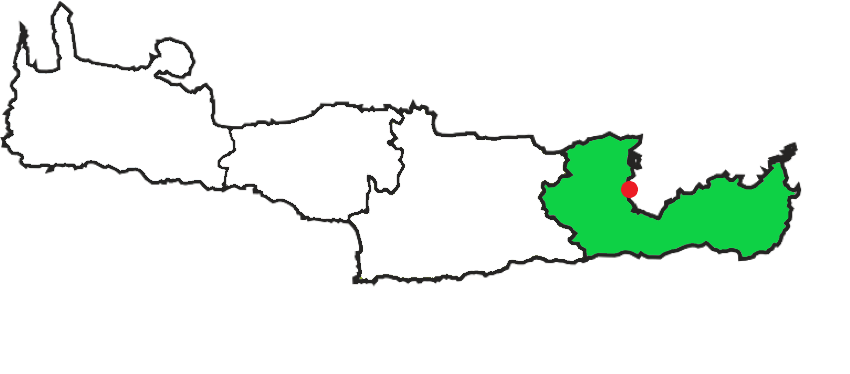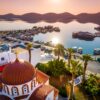Spinalonga
Spinalonga: Where Beauty and Tragedy Collide
Spinalonga Island, in Lassithi district, also known as the “island of the living dead” or “the island of tears,” is located on the northeastern coast of Crete. The island is very close to Plaka village and Elounda in the Mirabello Gulf. It stands as a testament to the rich tapestry of history and natural beauty that Crete has to offer. Despite its dark past, today it is a popular destination for travelers seeking a unique blend of history, culture, and scenic landscapes. Join us on a virtual journey to explore the ancient and modern facets of Spinalonga, discover its historical significance, and learn why it’s a must-visit destination.
origin of the name
During the time of ancient Olous (now Elounda), the island’s name was Kalydon.
Since those times, it has played a huge role in protecting the harbor of Olous from pirate raids.
According to the Venetian cartographer Vincenzo Coronelli, Spinalonga wasn’t always an island! It was actually naturally connected to the Kolokitha peninsula, and during Venetian rule, they managed to separate it in 1526 to create the island that stands today.
Its current name, Spinalonga, is a hearing paraphrase, from the Venetians, of an expression that the locals used, “Stin Elounda” (meaning: to Elounda). In Latin, “spina lunga” means “long thorn,” and that name remained.
When the island of Cyprus fell under Ottoman rule, the Venetians knew that Crete was their next target, so they began a fortification project on the whole island. One of these fortifications is located on Spinalonga Island.
There were three forts that were never conquered during the Ottoman invasion of Crete, but they were given to them when they reached an agreement with the Venetian Republic.
These forts were Gramvousa at Balos Lagoon, Souda fort in Souda Bay, and Spinalonga in Mirabello Gulf.
During the Cretan revolution, the island became a refuge for Turk families, along with the fortress of Ierapetra, as they were feared of Christian reprisals.
The 1112 Turk residents of the island formed their own community from 1881 until 1903, when the island became a leper colony.
history
Spinalonga’s role was clear from the beginning of civilization in the area. From the ancient Minoans, Roman Empire, and Byzantine Empires to Venetian and Ottoman rule, it was the protector of the harbor.
Even though the city of Olous ceased to exist (7th–15th century AD), the empires continued to use the harbor as a trading center and also take advantage of the partly natural salt pans of the area.
Salt has been very important since the Roman Empire, as it was used as a payment method for soldiers and a trading good. The word sault it is directly connected with the current word for the monthly payment, “sallary.”
During the Venetian era, the trading centers of the Aegean were under the constant threat of pirate raids (Arabian pirates) and the expansion of the Ottoman Empire.
They were the two main entrances to the island. One of them was called Dante’s tunnel, from the famous Dante’s Inferno, as the newcomers didn’t know what was going to happen to them, befitting the quote “Abandon hope, all ye who enter here.”
As the years passed, the Leper Hospital was modernized. It employed a director, a doctor, nurses, caregivers, cleaners, financial staff, and priests.
The lepers lived in the Turkish community houses that we mentioned above and in modern buildings built in the 1930s.
Plaka village, directly across the island, was created to serve the leper colony.
Finally, in 1957, with the discovery of antibiotics and all lepers treated, the leper colony closed and the island was abandoned.
The last resident, a priest named Father Chrysanthos, fled the island in 1962. This was done to uphold the Greek Orthodox Church’s religious custom of commemorating buried deceased 40 days, 6 months, 1, 3, and 5 years following their death.
Father Chrysanthos wasn’t a patient on the island, and he stayed there for over 10 years. His story is truly fascinating. According to cured patients, he was a guide and well respected by the people of Spinalonga. His burial is located at Toplou Monastery.
Spinalonga: the island of living dead
In 1903, the Cretan State gathered all lepers from Meskinia, as they were called, communities surrounding Crete’s major cities and sent them to Spinalonga.
Thus, the island became a leper colony for Cretan patients suffering from leprosy (Hansen dicease), “the death before death” disease, as it was called.
Initially, lepers were brought from Crete, and eventually from around Greece.
A story filled with anguish, screaming, and death would rule the island for half a century.
Initially, lepers’ lives were horrible. Spinalonga was a large slum, a leper graveyard, with no organization, no medical care, and no hope.
During the Italian-German occupation, the occupiers refused to release the lepers and were forced to care for them because Plaka village had been evacuated.
In addition, the entire coastline area of Elounda had been reinforced with machine guns, subterranean mines, firearms, and other weapons because the Germans expected a British invasion in that area.
Neither Italians nor Germans dared to enter the settlement. This fact enabled lepers to operate illegal radios, duplicating news from London and Cairo and redistributing it to the locals.

The last inhabitant of spinalonga father chrysanthos
the island today
During the 1970s, Crete’s authorities began improving the island’s facilities, recognizing the island’s popularity among foreign visitors.
Today, the uninhabited island is a famous tourist attraction on Crete. Aside from the abandoned leper colony and fortification, Spinalonga is notable for its shallow, pebbled beaches.
The island is easily accessible from Plaka, Elounda, and Agios Nikolaos. Every day, tourist boats go from all three towns, with Elounda departing every 30 minutes.
Because there is no accommodation on Spinalonga, the tours are only a few hours long. Annually, the island welcomes around 300.000 visitors.
The island has an aura that is both macabre and poignant, making it a dark tourism destination.
It is now a ghost town, with many of the buildings falling into disrepair, the ruins of old Venetian bastions, and the cemetery, the final resting place of many sufferers of the disease.
Many books, movies, and TV serials were made and presented the conditions of the island.
points of interest
The island covers 85 acres and has an altitude (highest point) of 53 meters. In itself, the island is surrounded by breathtaking views of the Aegean Sea, the Kolokitha Peninsula, the Mirabello Gulf, and the mainland of Crete.
Photographers choose it due to its outstanding scenery to take photos of its beauty. But its surroundings are not the only thing worth taking photos of.
On Spinalonga Island, you can see remnants of all the previous inhabitants and journey through all the eras that passed. Let’s dive into some of the points of interest on the island (in no particular order):
Once past the museum, you will be entering the old village of Spinalonga, with old buildings right and left and the hospital standing out higher over the road.
The hospital is closed to the public. Also, keep in mind that it is forbidden to get inside the old building for your safety.
Traditional alleyways and stone-built houses with wooden beams decorate the village and tell the story of their previous owners.
In many parts of your tour, there are maps that tell you where you are, and you can navigate the island based on what to see next.
Of course, we couldn’t forget about the Venetian garisson and the fort that still stands as a symbol of power and strength.
Go up and see the watchtowers, the bastions where cannons once stood, holding pirates and intruders away.
And as a final stop, we have the cemetery, which is located on the Donato Bastion. Probably one of the most touching sights of the tour, you will see a few graves bearing no names.
A plaque stands in memory of all those who suffered, hoped, lived, and perished on the Greek island of Spinalonga. The plaque reads:
“In this martyred place of compulsory confinement, hundreds of our fellow human beings struck by leprosy buried all their hopes. We learn lessons from their lives. May their memory be eternal.”
We begin with the main entrances/gates of the island. The first one is Dante’s tunnel leading to the Venetian fortress, and it will be the first one you will pass during your visit after disembarking the boat.
The second entrance of the island is located near the disinfection chamber, and it leads to a beautiful pebbled beach.
After you pass Dante’s tunnel, you will enter the colony. Υou will come across a row of colorful buildings, former shops, which used to be the main market of the colony since the Ottoman era.
These buildings now host a museum (small exhibitions) with various items on display from different eras (boarding games, tools, medicine vials, etc.).
On the island, there are three churches where people used to visit and pray for a better tomorrow and for strength.
The first church that you will encounter on your tour is dedicated to Saint Panteleimon the Healer (Agios Panteleimonas).
Dating back to 1709, this is the place where the last inhabitant of the island lived (Father Chrysanthos), and there is a pilgrimage to the church to commemorate those who suffered and died on the island.
High up the main road, and close to the hospital, stands the second church of Spinalonga, Saint Nicholas (Agios Nikolaos).
Lastly, there’s a church dedicated to Saint George (Agios Georgios). From here, there are spectacular views of the nearby peninsula, the sea, and the bastions of Spinalonga.
Whilst enjoying your tour, when you look at the mainland Crete, try to feel and understand that all of these people who suffered on this island might have felt so close… and still, so far from the land, looking at the same view.
This article is dedicated to those who lost their lives and all of those who supported and survived.
THINGS TO SEE AND DO IN Spinalonga
Additional information about spinalonga
16 Kms from Agios Nikolaos city
Caffeteria & W.C.
Entrance fee 8€, Reduced 4€
Winter: Open only on request groups
Summer: 08:30-18:00 daily.
It takes 1 hour to see all sights. We recommend to take your time.
No available Wi - Fi.
Phone Number: +30 28410 22462
There are no infrastructures for the handicap.
How to Get There
The only way to access Spinalonga is by boat. The boat services to Spinalonga start from three points: Agios Nikolaos (bigger boats), Elounda, and Plaka. The cost depends on where you pick up the boat. If your accommodation isn’t in some of these towns, you might consider either driving, taking a KTEL bus, or getting a tour excursion that includes pickup from the hotel, transportation to the ferries, guidance on the island, and then returning.
Conclusion
Spinalonga stands today as a silent testament to the enduring human spirit. Though marked by hardship, the island’s story reminds us of the strength found in community and the power of resilience in the face of adversity. A visit to Spinalonga is not just a journey through history, but a chance to reflect on our own humanity and the importance of compassion.
ADDITIONAL TIPS FOR AN ENJOYABLE VISIT TO spinalonga

Destinations near spinalonga
More options for nearby locations to plan your vacations better!




